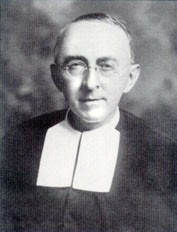Sainthood causes: April 2011 Archives
Subtle differences need certain light in a canonization process. Scholasticism advocates that we always distinguish. Benedict XVI will be beatifying his friend, colleague and boss, Pope John Paul II on May 1. So, the faithful are asking what's the difference between the ecclesial acts of beatification and canonization?
The Holy See told us what's considered to be the distinguishing marks of any beatification. There are three differences:
- location of dioceses that can hold annual public liturgical celebrations in the holy person's honor;
- who ceremonially requests the pope to act;
- and the level of papal authority involved in the proclamation.
What Pope Benedict has worked hard to remind the Church, "at a beatification ceremony, the bishop of the diocese where the person dies asks that the candidate be declared blessed; at a canonization, the prefect of the Congregation for Saints' Causes speaks in the name of the whole church and asks that the candidate be declared a saint."
But a central
difference between a beatification and canonization is that with a canonization
there is an act of declaring dogmatically, that God has revealed this person
with Him in beatitude. Essentially, it is a matter of papal infallibility.
Being a saint is a dogmatic statement; being a blessed is not. A saint can be
liturgically commemorated at the sacred Liturgy worldwide and remembered in
other circumstances like naming buildings after the person. When the Church
says a person is a blessed, it is an administrative act of the papal office; a
blessed can be liturgically commemorated is limited to certain circumstances,
like where the person lives or in the houses of the religious congregation
should the person be a religious.
 The accepted the recommendation of the Congregation for Saints today advancing to the next step several causes for saints, including the North American, Adolphe Chatillon (known in religious life as Frère Théophanius-Léo). Pope Benedict signed a decree that said Chatillon lived the Christian virtues in a heroic way. The Servant of God Adolphe Chattillon will now be called "The Venerable Servant of God Adolphe Chatillon --many will just use the simple form of the title "venerable."
The accepted the recommendation of the Congregation for Saints today advancing to the next step several causes for saints, including the North American, Adolphe Chatillon (known in religious life as Frère Théophanius-Léo). Pope Benedict signed a decree that said Chatillon lived the Christian virtues in a heroic way. The Servant of God Adolphe Chattillon will now be called "The Venerable Servant of God Adolphe Chatillon --many will just use the simple form of the title "venerable."
